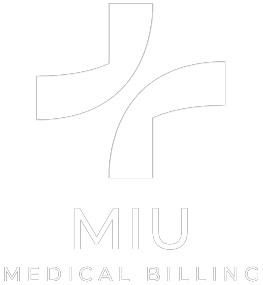Introduction
In today’s ever-evolving healthcare system, revenue cycle management is the core of every clinic’s financial health, especially for independent and small doctors’ offices. One error or delay in verification can result in a cascade of events leading to revenue loss and patient dissatisfaction.
This is why choosing the right medical billing software is a super critical investment to make for a flourishing clinic. Below is a highly detailed yet brief guide that will walk you through the important steps and specifications to consider when choosing billing software that fulfills your practice’s unique needs.
Why Do Small Clinics Need Reliable Medical Billing Software?
A lot of small practices juggle administrative tasks and patient care with limited resources and staff. Hence, in such a scenario, the system results in:
- Higher denial rates
- Incomplete reimbursement log maintenance
- Manual paperwork and data entry
- Delayed patient insurance verification
- Compromised compliance with HIPAA regulations
These issues can cause huge losses, and that’s why it’s time to upgrade your billing system. With the necessary software, your small practice will be able to:
- Improve patient experience
- Speed up the claim processing
- Ensure regulatory compliance
- Take control of cash flow
- Focus less on administration and more on patient care
What Features to Look For in Billing Software
While selecting medical billing software, you should consider all aspects that fit your practice. Here’s a walk-through of the core specifications healthcare providers with small clinics should prioritize.
Real-time patient insurance verification and eligibility check
Manually checking insurance eligibility can take all your time. Instead, the software you’re considering should:
- Integration with the patient database
- Validating patient coverage prior to appointments
- Automatically pinpoint non-covered services
End-to-End Claims Management
You should select software that is capable of handling the entire process of a claim from submission to reimbursement:
- Claim creation with auto-population from chart notes or EHRR
- Error checking and edits with claim scrubbing
- Claim submission to payers
- Denial management and resubmission
- Payment posting and reconciliation
Built-in Coding Support
Medical billing is nothing without accuracy in coding. You should prefer software that:
- Provides a built-in coding database for ICD-10, CPT, and HCPCS
- Pinpoints incomplete and mismatched code sets
- Offers a real-time coding suggestion
HIPAA and Compliance Tools
Patient information security is non-negotiable. Always prioritize software that contains:
- End-to-end data encryption
- Daily updates for regulatory changes
- Audit trails for legal security
- Access logs user permissions
Patient Portal for billing
For convenience purposes, good billing software should be able to
- Allow the patient to view and pay the bills online
- Provide automated reminders for insurance balance
- Allow secure contact with billing staff.
EHR, Scheduling, and Accounting Integrated System
Software should be able to:
- Seamlessly sync with your EHR. Such software examples are Allscripts and Epic.
- Automated information flow from patient registration to claim submission
- Compatible with accounting tools
Custom Reporting and Analytics
The software should be able to catch the following data:
- Denial rate
- Time duration taken to receive the payments
- Top payers and procedures
Steps to Follow While Choosing the Right Software
Step 1
Thoroughly Assess Your Clinic’s Unique Needs
Start by analyzing the following:
- Number of providers in your clinic
- Number and type of specialties you serve
- The rate of insurance claims that are processed monthly
- Any existing PM or EHR systems
Through this, you will be able to identify the software that fits perfectly with your practice’s needs.
Step 2
Determining the Budget
Different billing software has different prices. They vary, and hence, here’s a breakdown of the packages:
| Package type | Average Cost |
| Cloud subscription | $75-$300 per month per provider |
| On-Premise License | Around $1000 one-time payment |
| Outsourcing | 3% to 7% of the total revenue |
Step 3
Comparing popular software
| Software | Key features | Perfect for |
| DrChrono | Compatible with IOS/Mac with EHR integration | Apple users and Mid-sized clinics |
| Kareo | All-in-one billing management | Small solo practices ie, primary care |
| AdvancedMD | Customizable workflows and reports | Specialty practices |
| CharmHealth | Good support and cost-effective | Practices with limited resources |
| Athenahealth | Strong RCM with EHR | Multispecialty practices |
Step 4
Scheduling a Demo
A trial is a must. While a demo, you should look for:
- Intuitiveness of the interface
- Easy use for front desk billers
- Turnaround time on claims
- If training is included
Step 5
Check Uptime Guarantees, Support, and Training
Software should come with:
- Round-the-clock dedicated support by an account manager
- Free guide resources like videos and webinars
- Guaranteed uptime
- Data transfer assistance and help
Common Mistakes Not to Make
- Selecting software on the basis of its cost
- Not prioritizing HIPAA compliance requirements
- Not assessing the ease of use for your staff
- Skipping the trial period
- No long-term planning for future scalability
Working with MIU Medical Billing
MIU is more than just billers; our experts are your billing strategy partners. We have helped many providers, guiding them from scratch on all the latest software. We are able to:
- Choose the best software according to your specialty and size.
- Set up an EHR-integrated system
- Manage full billing cycles, denials, and reporting
- Provide free audits and suggestions for improvements
- Support your practice compliance
So what are you waiting for? Don’t waste time thinking about what’s best for your company, and let our experts take the lead.




